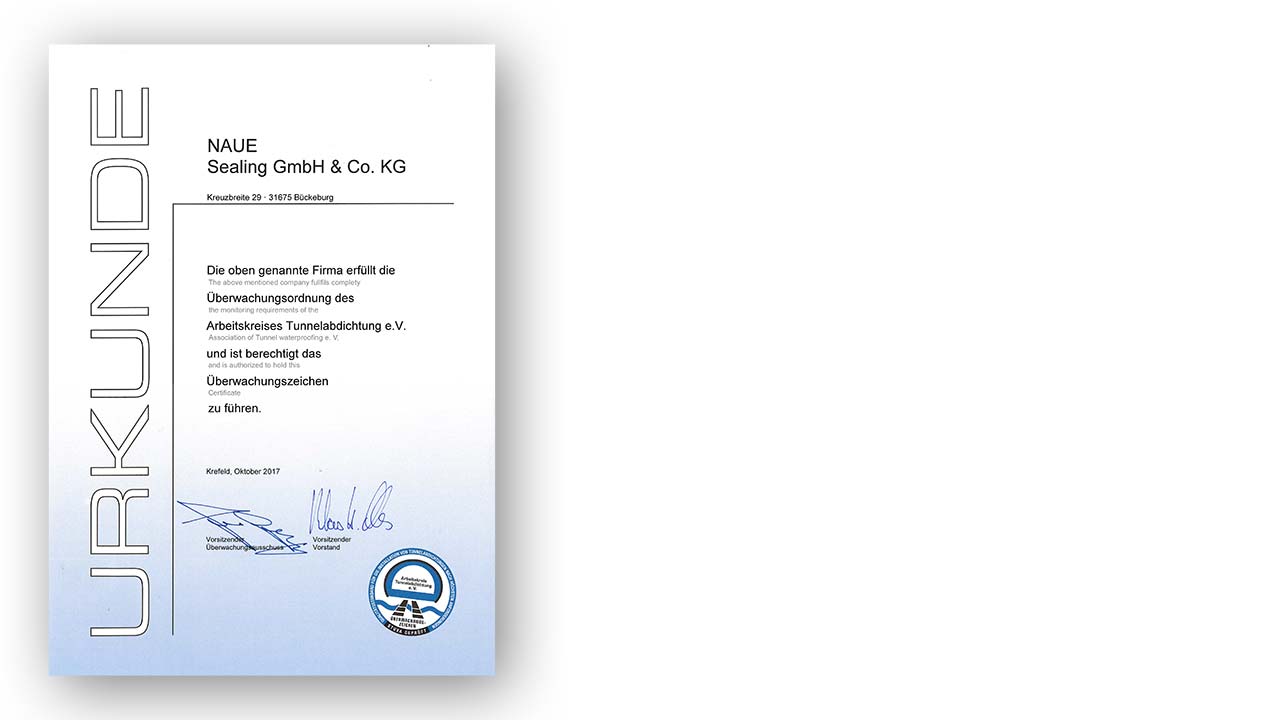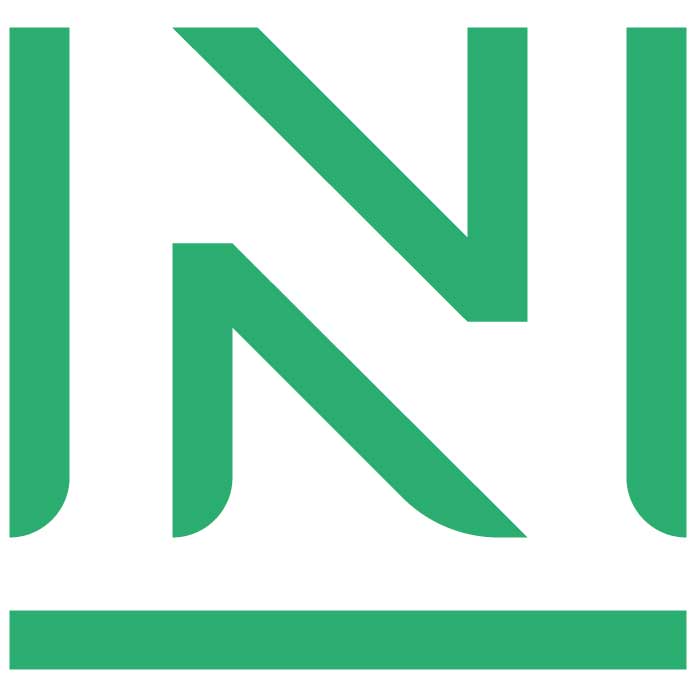Tunnel waterproofing
Modern tunnels are planned with a functional service life of more than 100 years. They must be properly protected against the impact of groundwater. Therefore, there are high demands on the structure and on the waterproofing. Hence, it is very important to supply a perfectly compatible waterproofing system.
Complete system solution
From high-quality system components “Made in Germany”, to the installation by a certified installation team, Naue offers the ideal, complete solution for tunnel waterproofing.
In principle, there are distinctions made in tunnel construction between a sealing against water pressure and against seepage water. For seeping water, a Carbofol® tunnel geomembrane that is 2 mm thick can be used as an umbrella seal. For occurring hydrostatic water, the use of an all-around sealing (360°) with a separation system is the required solution. This results in three different sealing systems.
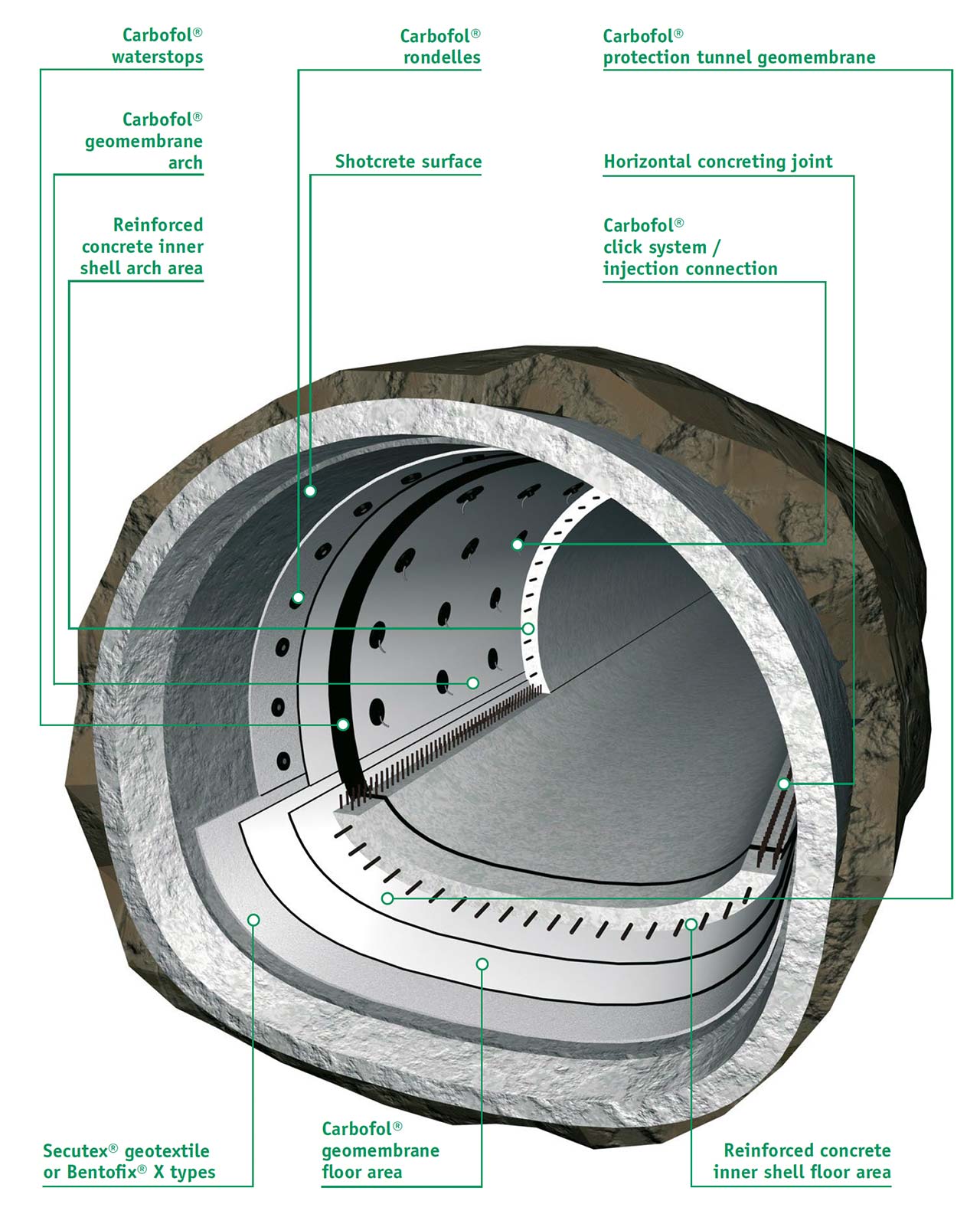
Seepage water sealing system (SWA) “Drained tunnel“
The structure is protected against water by a Carbofol® tunnel geomembrane with an umbrella sealing system (Fig. 9). This system discharges the incoming seepage water without pressure over the longitudinal drainage at the foot of the structure. If the seepage water corresponds to class XA3 (“highly aggresive“), 360° single-layer geomembrane must be installed for corrosion protection reasons.
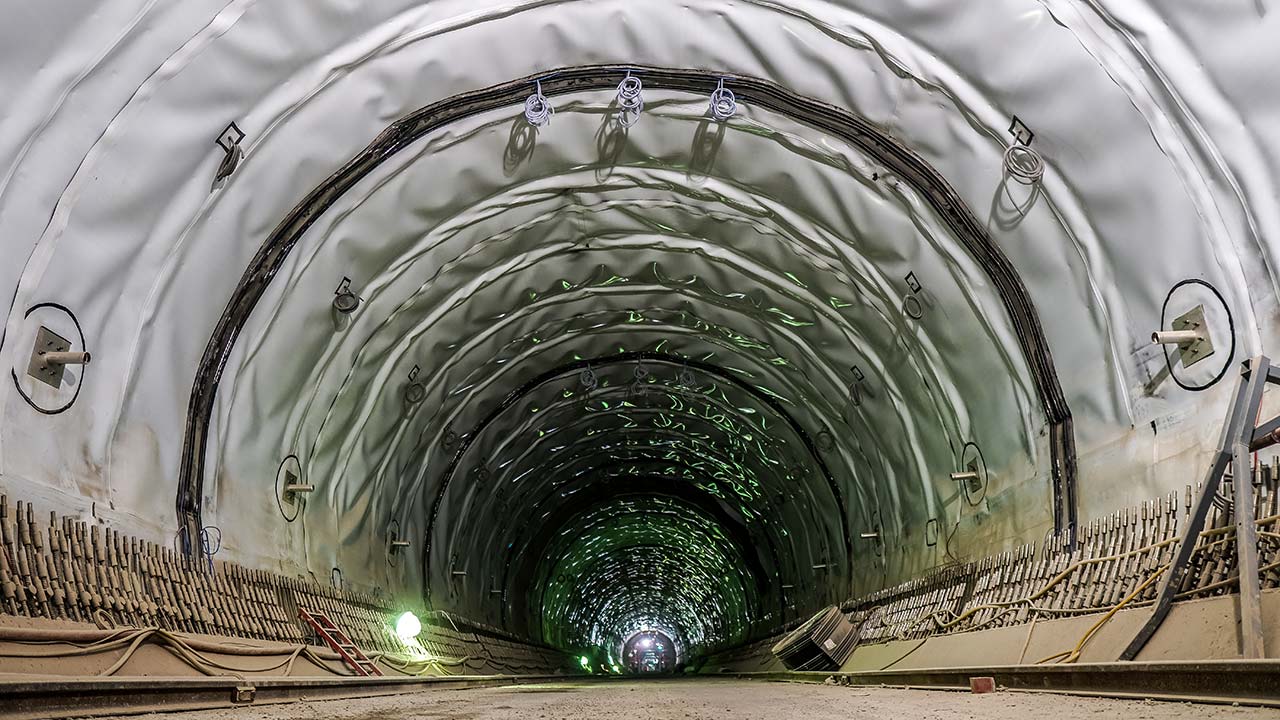
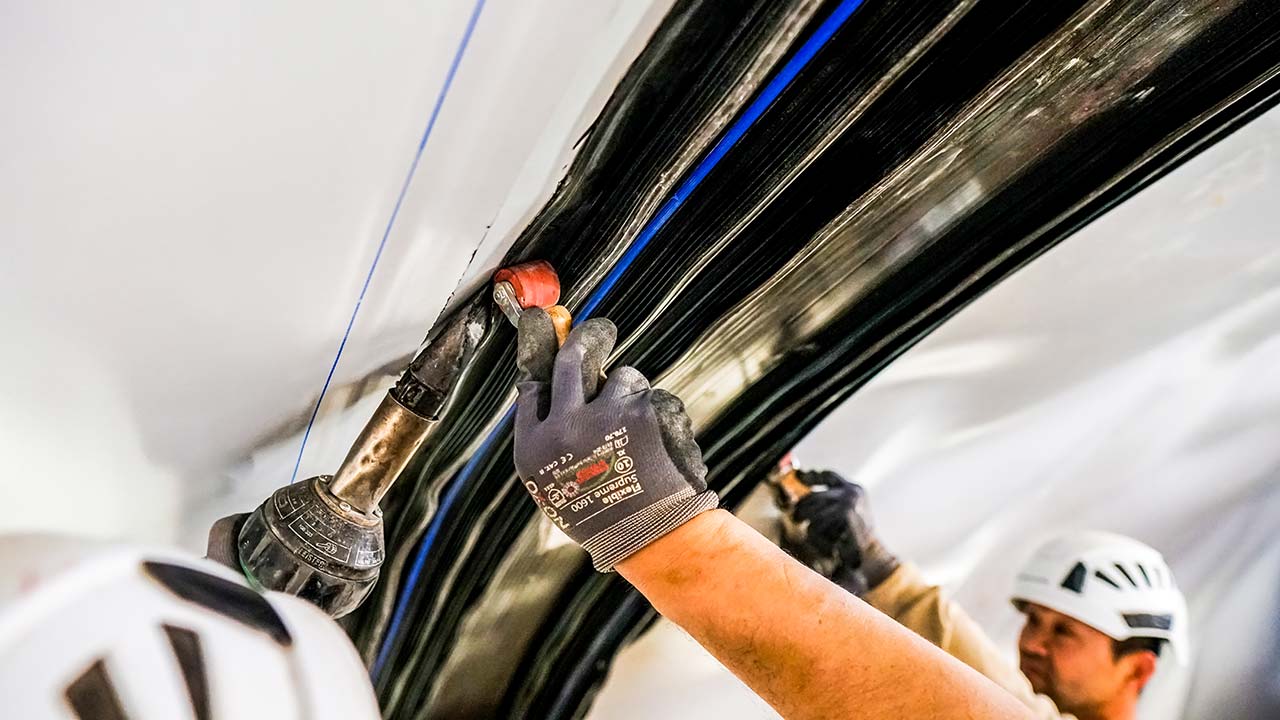
Hydrostatic pressure sealing system (DWA) “360° sealing with segmental waterstops“
When hydrostatic water pressure is present, it is recommended to use a water-impermeable concrete that is protected with a Carbofol® tunnel geomembrane (Fig. 10), especially if the classification of the seepage water corresponds to exposition class XA3 (”highly aggressive“). In order to limit potential damage and to confine the damaged area, the concrete segments are additionally sealed with external waterstops.
Hydrostatic pressure sealing system with integrated injection system (DWA-I) “360° sealing with segmental separation including injection devices for injection after hydrostatic pressure stress“
For hydrostatic pressures in excess of a 10 m water column, an integrated injection system for targeted repair options is planned (Fig. 11). The sealing system otherwise corresponds to the construction of the hydrostatic pressure system (DWA).
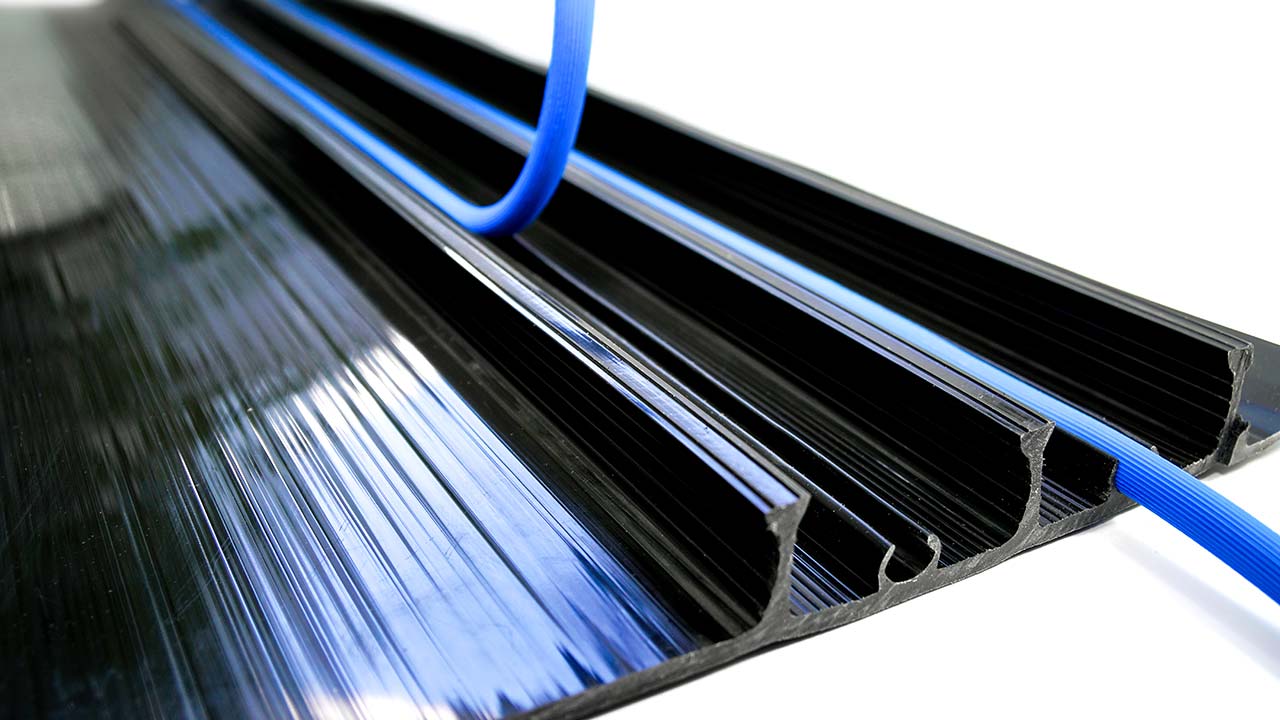
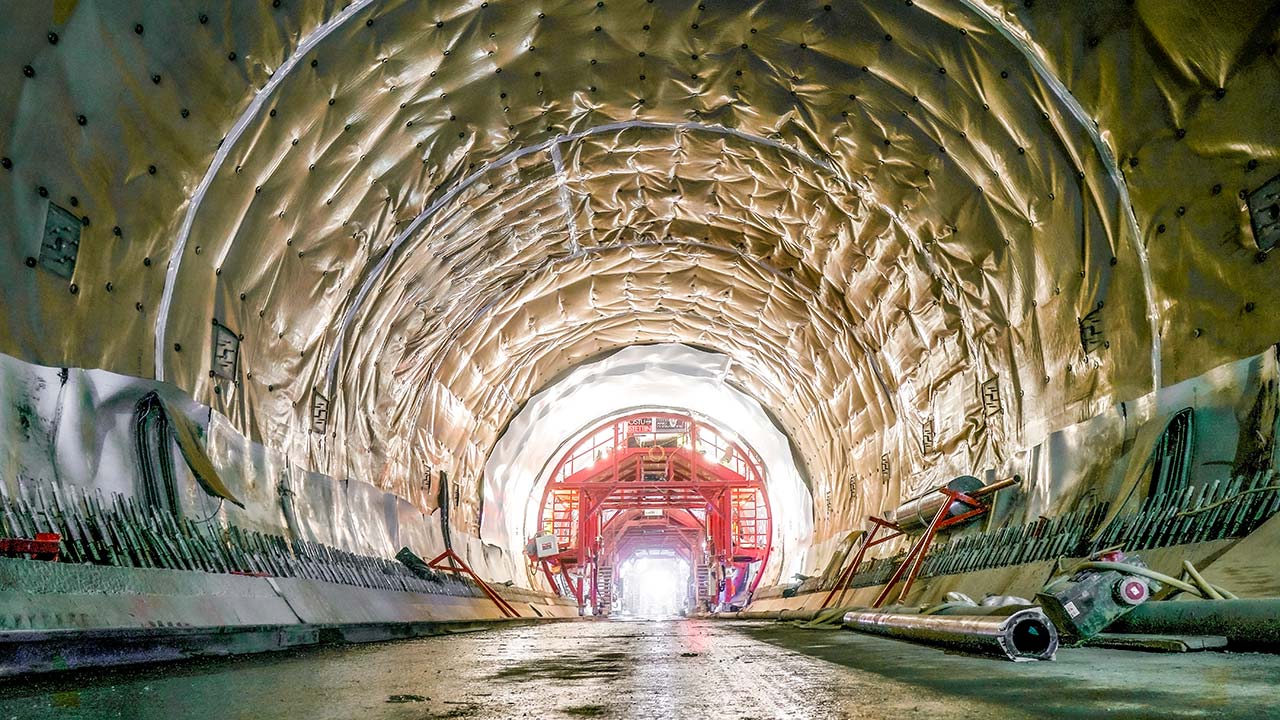
Bentofix® X types as sealing component
Bentofix® X GCLs can be installed as strip-shaped, radially running elements or over the entire surface of the tunnel sealing system. The complete concreting of the tunnel inner shell is important for the basic functional reliability. Due to the sometimes large inner shell thicknesses and correspondingly high steel reinforcement, two options are recommended for achieving the required uniform surface pressure on the tunnel sealing system: either the use of self-compacting concrete or an additional concrete grouting (360°) after finalising the regular inner shell concreting. This grouting should be done at the earliest one month after concreting and before stopping the permanent lowering of water table.
Installation by a certified specialist
The professional and successful installation of tunnel waterproofing systems requires a high degree of professional competence and experience. Once installed, the waterproofing system needs to pass through a strict quality control procedure performed by a certified company. The Arbeitskreis Tunnelabdichtung e.V. (Association for Tunnel Waterproofing) offers appropriate quality control procedures and requirements for specialist tunnel waterproofing companies. Naue is a full member of this association and certified according to its high standards.
